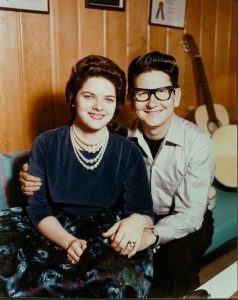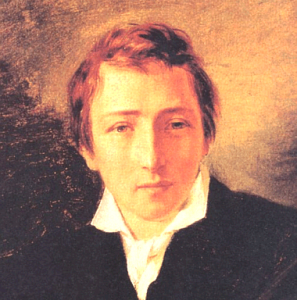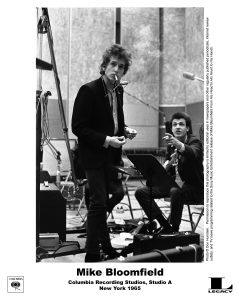by Jochen Markhorst
 Roy Orbison is madly in love with the teenager Claudette Frady and writes the song “Claudette” for her. Sam Phillips from Sun Records likes it a lot and has it recorded by the Everly Brothers, who eventually use it as a B-side for one of their many #1 hits: “All I Have To Do Is Dream” (1957).
Roy Orbison is madly in love with the teenager Claudette Frady and writes the song “Claudette” for her. Sam Phillips from Sun Records likes it a lot and has it recorded by the Everly Brothers, who eventually use it as a B-side for one of their many #1 hits: “All I Have To Do Is Dream” (1957).
With the royalties Orbison can make a down payment for his first, real Cadillac and marry his Claudette. The marriage is not long and happy. Moments later The Big O is a star, a lonely Claudette starts an affair and they divorce in November ’64, when “Oh, Pretty Woman” is high in the charts on both sides of the ocean.
But still, she really is the greatest girl that I’ve ever been with and when she visits him in hospital a few months later, after a small motorbike accident in England, they reconcile and in August ’65 they are married again.
This time the regained happiness lasts even less long. During a joint motorcycle trip, June 6, 1966, Claudette crashes on a pick-up truck and she dies on the spot. Dylan recalls this tragedy in 2007, after he plays the original demo recording of Orbison’s “Claudette” in his Theme Time Radio Hour (episode 35: “Women’s Names”).
Claudette is, in short, not a name to be used lightly. A self-proclaimed, seasoned Orbison fan like Dylan (“There wasn’t anything else on the radio like him. I’d listen and wait for another song, but next to Roy the playlist was strictly dullsville…gutless and flabby” – Chronicles) certainly has associations with the name – evoking sooner fate and disaster than roses and moonshine.
Disaster and fate abound, subsequently, in the lyrics of that miraculous, fascinating and abundant “The Groom’s Still Waiting At The Altar”.
Apocalyptic visions borrowed directly from Revelations, one of Dylan’s favourite Bible books: the slaughter of innocents, burning cities and murdered nuns… and to complete the horror, he cannot find the light switch and has not seen Claudette since January. In itself, this is a run-of-the-mill grass may wither and flowers may fall scenario, contrasting world-shattering catastrophes with intimate suffering, but Dylan elevates the cliché.
The expressive power of the opening line Prayed in the ghetto with my face in the cement sets the tone for the dark, enigmatic content of the verses that will follow. A Hard Rain part 2, one may be tempted to think, after the second line (“Heard the last moan of a boxer, seen the massacre of the innocent”) – but stylistically, this song is more multiform. The love and talent for aphoristic points, as we will encounter more often in the highlights of the upcoming 80’s-songs, blossom here. Three of these pearls the poet places here, with an elegant choice of words (are there songs with words like “aloofness” or “snobbery” in the lyrics?) demonstrating the author’s eloquence. 
The biblical tone suggests that Dylan is still in the middle of his evangelical phase, although earthly, ironic points are already being served. “Try to be pure at heart…” paraphrases Jesus’ Sermon on the Mount (“Blessed are the pure in heart; for they shall see God” – Mat. 5:8), but is banalised wittily: “…they arrest you for robbery”. The satirical Jewish poet Heinrich Heine (1797-1856), Dylans spiritual ancestor, may be proud of his successor.
The Bible is often quoted, by the interpreters of this song. The bridegroom-metaphor can be found on the last page, at the end of Revelation, though just a touch more metaphorically; the new Jerusalem is the bride, the Lamb’s fiancée, who is dressed up and awaiting the arrival of her groom, Jesus. And yes indeed, west of the Jordan, that can’t be misinterpreted, obviously. Remarkable, however, is that precisely this topographical hint has only been added in the later text version, the studio version from April ’81. The chorus of the primeval version, the version we know from the inspired live performances at the Warfield Theater in San Francisco, November 1980, has no Jordanian reference, sounds a lot more activist, missionary even, and suggests that a religious schism led to the love break:
Oh, set my affections on things above,
Let nothing stand in the way of that love,
Not even the Rock of Gibraltar!
Wel, if you see her on Fannin’ Street,
Tell her I still think she’s neat,
And that the groom’s still waiting at the altar
 Of course, those Warfield performances have historical value not only because of Dylan’s passion, and certainly not because of the primeval version of Groom, but most of all because of the swan song of the unforgettable Mike Bloomfield. Gifted and influential guitarist Bloomfield is a mid 60’s comrade in arms, to whom a large part of the impact of Highway 61 can be attributed.
Of course, those Warfield performances have historical value not only because of Dylan’s passion, and certainly not because of the primeval version of Groom, but most of all because of the swan song of the unforgettable Mike Bloomfield. Gifted and influential guitarist Bloomfield is a mid 60’s comrade in arms, to whom a large part of the impact of Highway 61 can be attributed.
His guest appearance on the sixth evening, November 15th, is dazzling. Bloomfield shines in “Like A Rolling Stone” and is called back on stage to join Groom an hour later by a clearly enraptured, remarkably talkative Dylan. An unprepared Bloomfield stumbles onto the stage when the band is already well underway, and once again conjures up the stars of heaven. Like more great artists, however, he is also troubled and immoderate. This evening he plays his last public notes – three months later Michael Bernard Bloomfield, 37 years old, is found dead in his car after an overdose of heroin.
A few weeks later Dylan picks up “The Groom’s Still Waiting At The Altar” in the studio. The Jordan addition is not the only change, then. Claudette originally hangs out on Fannin Street, a notorious street near the Bayou River in the red-light district of Shreveport, Louisiana, where, according to Lead Belly’s mother, a decent man doesn’t go:
My mama told me
"Women in Shreveport, son
Gonna be the death of you"
Lead Belly goes anyway, though, I go down on Fannin Street and I goes into the bellhouse.
In the final version, Dylan takes away the sharper edges – maybe she manages a brothel in Argentina, but Claudette might as well be a respectable housewife by now.
Further textual changes are less substantial, or an improvement. Locked into a time-zone, with a high-degree temperature is rewritten into Put your hand on my head, baby, do I have a temperature?, for example. Still, Dylan is not entirely satisfied, apparently. He rejects the song for Shot Of Love and relegates it to being a B-side (for the “Heart Of Mine” single). “It sounded okay,” says the master in the Biograph booklet, “but it wasn’t really the way I wanted to play it.” Much to his surprise, most DJs then mainly play that B-side. Subsequently, Groom is reinstated on the re-release of the CD – a unique manoeuvre in Dylan’s discography.
There are only a few tolerable covers, but none of them are invigorating; Tim Drummond’s iron, compelling bass stomp Dylan already did bring to the studio, and the colleagues follow. The one by Rod Stewart, who has been producing distinctive Dylan covers since the 1960s, is beautiful, but Stewart also initially leaves the recording behind. Following the song’s traditional fate, it is only used as a B-side for an unsuccessful single (“This”, 1995). In 2009 an alternative recording is released on the 4CD set Sessions 1971-1998.
Veteran Elkie Brooks’ version on the pleasantly entertaining, flopped album Electric Lady from 2005 is more attractive: a subterranean driving bass, ripping sax, and the whole echoes, oddly enough, Dylan’s “Thunder On The Mountain”. The Doors’ “Roadhouse Blues” on the same album is equally driven and equally satisfying, by the way. Brooks’ English accent providing the je-ne-sais-quoi and taking both songs far, far away from Fannin Street down to, say, Portobello Road or Savile Row – but who cares.
Untold Dylan: who we are what we do
Untold Dylan is written by people who want to write for Untold Dylan. It is simply a forum for those interested in the work of the most famous, influential and recognised popular musician and poet of our era, to read about, listen to and express their thoughts on, his lyrics and music.
We welcome articles, contributions and ideas from all our readers. Sadly no one gets paid, but if you are published here, your work will be read by a fairly large number of people across the world, ranging from fans to academics who teach English literature. If you have an idea, or a finished piece send it as a Word file to Tony@schools.co.uk with a note saying that it is for publication on Untold Dylan.
We also have a very lively discussion group “Untold Dylan” on Facebook with around 5500 active members. Just type the phrase “Untold Dylan” in, on your Facebook page or follow this link
You’ll find some notes about our latest posts arranged by themes and subjects on the home page of this site. You can also see details of our main sections on this site at the top of this page under the picture. Not every index is complete but I do my best.
But what is complete is our index to all the 604 Dylan compositions and co-compositions that we have found, on the A to Z page. I’m proud of that; no one else has found that many songs with that much information. Elsewhere the songs are indexed by theme and by the date of composition. See for example Bob Dylan year by year.

Please please for wait, I am trying to get to heaven before they close the door!
We are actively promoting a link to this interesting topic on The Bob Dylan Project at:
https://thebobdylanproject.com/Song/id/646/The-Grooms-Still-Waiting-at-the-Altar
If you are interested, we are a portal to all the great information related to this topic.
Join us inside Bob Dylan Music Box.